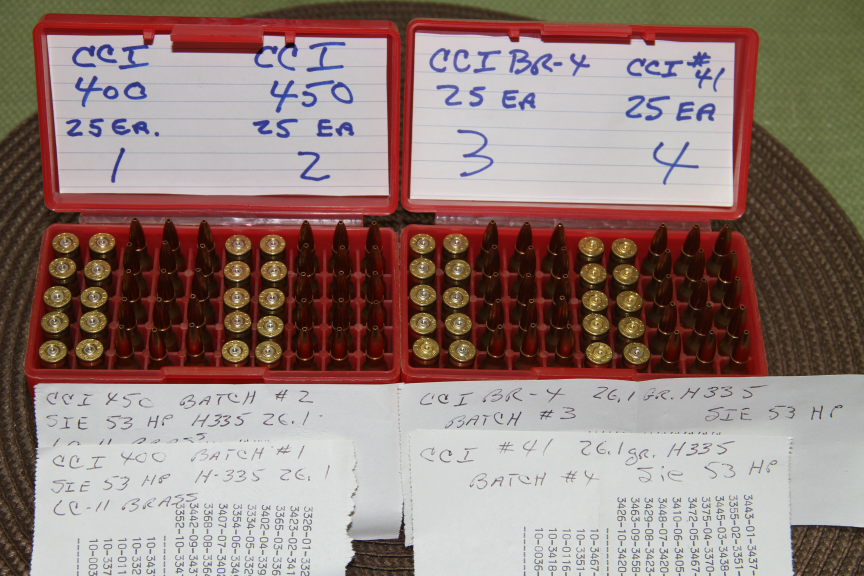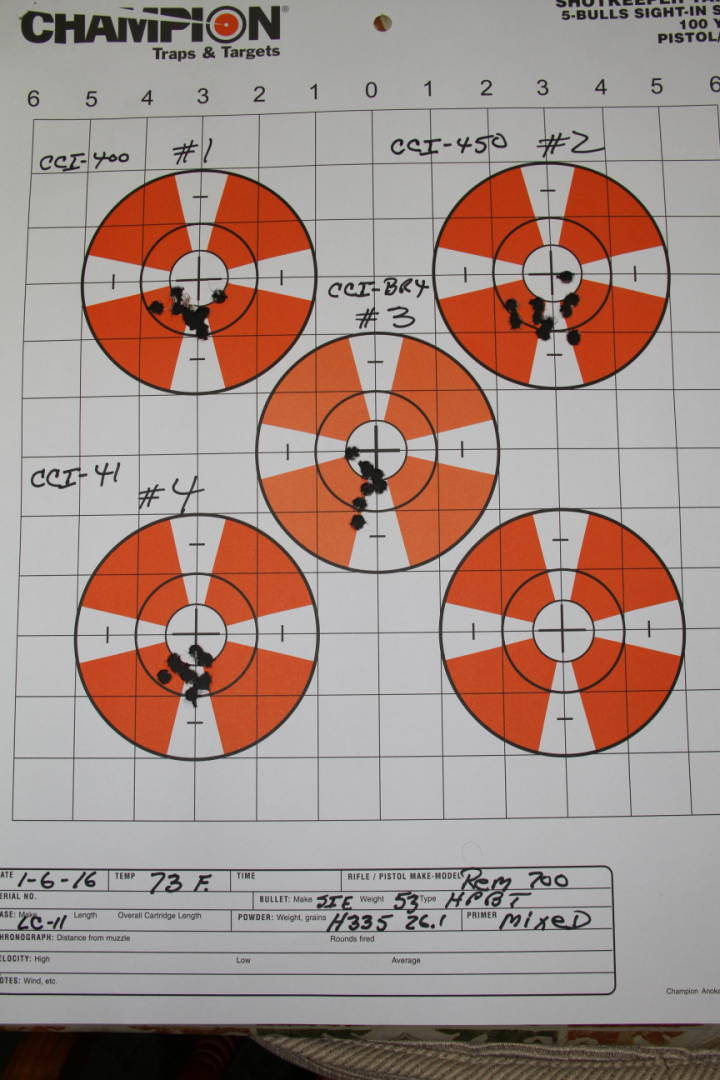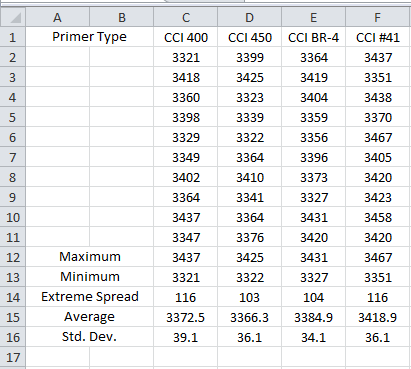Jim Watson
New member
We see frequent angst over primer selection:
"The "recipe" calls for Acme primers but all I have is Brand X, what do I do?"
"I accidentally bought magnum primers instead of standard, what do I do?"
The usual response is:
"Reduce your load by 10% and "work up.""
So I thought I would check it out, as applies to bulk pistol ammo.
My current IDPA ESP 9mm load is a 135 gr BBI Hi-Tek coated RN and 3.8 gr HP38. For this test I sorted out all Winchester brass and weighed all powder.
Shot over a ProChrono Digital 12 ft away with a Springfield 1911A1 9mm, factory 5" barrel. Average of five rounds.
Winchester Small Pistol Standard - 1019 fps
CCI Small Pistol Standard ---------- 1020 fps
Federal Small Pistol Standard ------ 1021 fps
Remington Small Pistol Standard -- 1044 fps
CCI Small Pistol Magnum ----------- 1022 fps
Federal Small Rifle Standard ------- 1023 fps
Winchester Small Rifle Standard --- 1026 fps
CCI BR4 Small Rifle Match ---------- 1019 fps
Now isn't that interesting. Seven out of eight primers, rifle and magnum included, within 7 fps. And the oddball noticeably faster, is the plain Rem 1 1/2 small pistol standard, not one of the accepted "hotter" rifle or magnum. And then only by 23 fps from the average of the other 7; about 2%.
Of course you might get different results in different calibers or with different powders. But a large pistol magnum gave a whopping 11 fps gain over standard in .45 ACP loaded with Bullseye.
"The "recipe" calls for Acme primers but all I have is Brand X, what do I do?"
"I accidentally bought magnum primers instead of standard, what do I do?"
The usual response is:
"Reduce your load by 10% and "work up.""
So I thought I would check it out, as applies to bulk pistol ammo.
My current IDPA ESP 9mm load is a 135 gr BBI Hi-Tek coated RN and 3.8 gr HP38. For this test I sorted out all Winchester brass and weighed all powder.
Shot over a ProChrono Digital 12 ft away with a Springfield 1911A1 9mm, factory 5" barrel. Average of five rounds.
Winchester Small Pistol Standard - 1019 fps
CCI Small Pistol Standard ---------- 1020 fps
Federal Small Pistol Standard ------ 1021 fps
Remington Small Pistol Standard -- 1044 fps
CCI Small Pistol Magnum ----------- 1022 fps
Federal Small Rifle Standard ------- 1023 fps
Winchester Small Rifle Standard --- 1026 fps
CCI BR4 Small Rifle Match ---------- 1019 fps
Now isn't that interesting. Seven out of eight primers, rifle and magnum included, within 7 fps. And the oddball noticeably faster, is the plain Rem 1 1/2 small pistol standard, not one of the accepted "hotter" rifle or magnum. And then only by 23 fps from the average of the other 7; about 2%.
Of course you might get different results in different calibers or with different powders. But a large pistol magnum gave a whopping 11 fps gain over standard in .45 ACP loaded with Bullseye.



